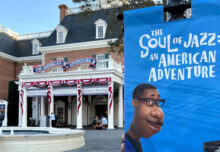A Disney dining plan is offered to accompany its ticket system. The plan is available to all Disney resort guests, except those staying at the Swan, the Dolphin, the hotels of the Disney Springs Resort Area, and Shades of Green. Guests must also purchase a Magic Your Way package from Disney (not through an online reseller), have Annual Passes, or be members of the Disney Vacation Club (DVC) to participate in the plan. Except for DVC members, a three-night minimum stay is typically also required. Overall cost is determined by the number of nights you stay at a Disney resort.
You must purchase a Disney package vacation to be eligible for a dining plan.
DISNEY DINING PLAN This plan provides, for each member of your group (ages 3 and up), for each night of your stay, one counter-service meal, one full-service meal, and two snacks at participating Disney dining locations and restaurants, including room service at some Disney resorts (type “Disney Dining Plan Locations” into your favorite search engine to find sites with the entire list).
The plan also includes one refillable drink mug per person, per package, but it can be filled only at Disney resort counter-service restaurants. For guests ages 10 and up, the price for 2018 is $75.49, tax included; for guests ages 3–9, the price is $25.76 per night, tax included. Children younger than age 3 eat free from an adult’s plate.
For instance, if you’re staying for three nights, you’ll be credited with three counter-service meals, three full-service meals, and six snacks for each member of your party. All those meals will be put into a group meal account. Meals in your account can be used by anyone in your group, on any combination of days, so you’re not required to eat every meal every day. This means that, say, you can skip a full-service meal one day and have two on another day.
The counter-service meal includes:
- An entrée (a sandwich, dinner salad, pizza, or the like) or a complete combo meal (such as a burger and fries) plus beverage; breakfast is typically a combo platter with eggs, bacon or sausage, potatoes, a biscuit, and a drink
The full-service sit-down meals include:
- An entrée or a complete combo meal, plus beverage
- A dessert (except breakfast)
If you’re dining at a buffet, the full-service meal includes the buffet and beverage. Tax is included in the dining plan, but tips are not. Beverage choices include unlimited soda, coffee, or tea; one milkshake, smoothie, or specialty hot chocolate; or, for guests 21 and older, one beer, glass of wine, or cocktail.
A snack can be any of several single-serving items such as a pretzel or bottle of water. They are often specifically marked as Dining Plan snacks on menus and may include:
- Frozen ice-cream novelty, ice pop, or fruit bar
- Piece of whole fruit
- Popcorn scoop
- 12-ounce coffee, hot chocolate, or hot tea
- Prepackaged milk or juice
- Bag of snacks
- 20-ounce bottle of Coca-Cola, Sprite, or Dasani water
- 20-ounce fountain soft drink
Disney’s top-of-the-line restaurants (aka Disney Signature Restaurants), along with Cinderella’s Royal Table, all the dinner shows, regular room service, and in-room pizza delivery, count as two full-service meals on the standard Disney dining plan.
In addition to the preceding, the following rules apply:
- Everyone staying in the same resort room must participate in the Disney Dining Plan.
- Children ages 3–9 must order from the kids’ menu, if available. This rule is occasionally relaxed at Disney’s counter-service restaurants, enabling older kids to order from the adult (ages 10+) menu.
- Alcoholic and specialty beverages are included in the plan starting in 2018.
- A full-service meal can be breakfast, lunch, or dinner. The greatest savings occur when you use your full-service meal credits for dinner.
- The meal plan expires at midnight on the day you check out of your Disney resort. Unused meals are nonrefundable.
- Neither the Disney Dining Plan nor Disney’s Free Dining can be added to a discounted room-only reservation.
QUICK-SERVICE DINING PLAN This plan includes meals, snacks, and drinks at most counter-service eateries and outdoor carts in Walt Disney World. The cost (including tax) is $52.50 per day for guests ages 10 and up, $21.75 per day for kids ages 3–9. The plan includes two counter-service meals and two snacks per day, in addition to one refillable drink mug per person, per package (eligible for refills only at counter-service locations in your Disney resort).
DISNEY DELUXE DINING PLAN This plan offers a choice of full- or counter-service meals for three meals a day at any participating restaurant. In addition to the three meals a day, the plan also includes two snacks per day and a refillable drink mug. The Deluxe Plan costs $116.25 for adults and children ages 10 and up and $40 for children ages 3–9 for each night of your stay (prices include tax).
Not only does the Deluxe Dining Plan cost a lot of money, it costs a lot of time to have three sit-down meals every day.
In addition to food, all the plans include sweeteners, such as a free round of miniature golf, discounts on spa treatments and salon services, and deals on recreational activities like watersports.
Disney ceaselessly tinkers with the dining plans’ rules, meal definitions, and participating restaurants. Here are some recent examples:
- You can exchange a sit-down meal credit for a counter-service meal, though doing this even once can negate any savings you get from using a plan in the first place.
- At sit-down restaurants, you can substitute dessert for a side salad, cup of soup, or fruit plate.
- You may exchange one sit-down or counter-service meal credit for three snacks, as long as you do so within the same transaction. It is not a good deal to exchange a sit-down credit for three snacks.
- Counter-service restaurants do not differentiate between adult and child meal credits. If you have two adult credits and two child credits on your account, you may purchase four adult counter-service meals with those credits.
- Finally, you can use your meal credits to pay for the meals of people who are not on any dining plan.
THINGS TO CONSIDER WHEN EVALUATING THE DISNEY DINING PLAN
The dining plan has been one of the most requested of Disney’s package add-ons since its introduction; families report that their favorite aspect is the peace of mind that comes from knowing their meals are paid for ahead of time, rather than having to keep track of a budget while they’re in the parks. Families also enjoy the communal aspect of sitting down together for a full meal, without having to worry about who’s picking up the food or doing the dishes.
Costwise, however, it’s difficult for many families to justify using the plan. If you prefer to always eat at counter-service restaurants, you’ll be better off with the Quick-Service plan. You should also avoid the Disney Dining Plan if you have finicky eaters, you’re visiting during holidays or summer, or you can’t get reservations at your first- or second-choice sit-down restaurants. In addition, if you have children ages 10 and up, be sure that they can eat an adult-size dinner at a sit-down restaurant every night; if not, you’d probably come out ahead just paying for everyone’s meals without the plan.
If you opt for the plan, skipping one full-service meal during a visit of five or fewer days can mean the difference between saving and losing money. In our experience, having a scheduled sit-down meal for every day of a weeklong vacation can be mentally exhausting, especially for kids. One option might be to schedule a meal at a Disney Signature Restaurant, which requires two full-service credits, and have no scheduled sit-down meal on another night in the middle of your trip, allowing everyone to decide on the spot if they’re up for something formal.
As already noted, many of the most popular restaurants are fully booked as soon as their reservation windows open. If you’re still interested in the dining plan, book your restaurants as soon as possible, typically 180 days before you visit. Then decide whether the plan makes economic sense.
If you’re making reservations to eat at Disney hotels other than your own, a car allows you to easily access all the participating restaurants. When you use the Disney transportation system, dining at the various resorts can be a logistical nightmare. Those without a car may want to weigh the immediate services of a taxi or ride sharing—typically $9–$25 each way across Disney property, versus a 50- to 75-minute trip on Disney transportation each way.
When Disney offers Free Dining discounts (typically in September), they generally charge rack rate for the hotel. You should work out the math, but Free Dining is typically a good deal for families who have two children under age 10, are staying at a Value resort, and book lots of character meals. Light eaters and childless couples, especially those staying at Deluxe resorts, may find it cheaper to take a room discount and pay for food separately.
For more information on all restaurants accepting the Disney Dining plan, check out The Unofficial Guide to Walt Disney World by Bob Sehlinger and Len Testa. If you enjoyed this post, sign up for our newsletter here.














